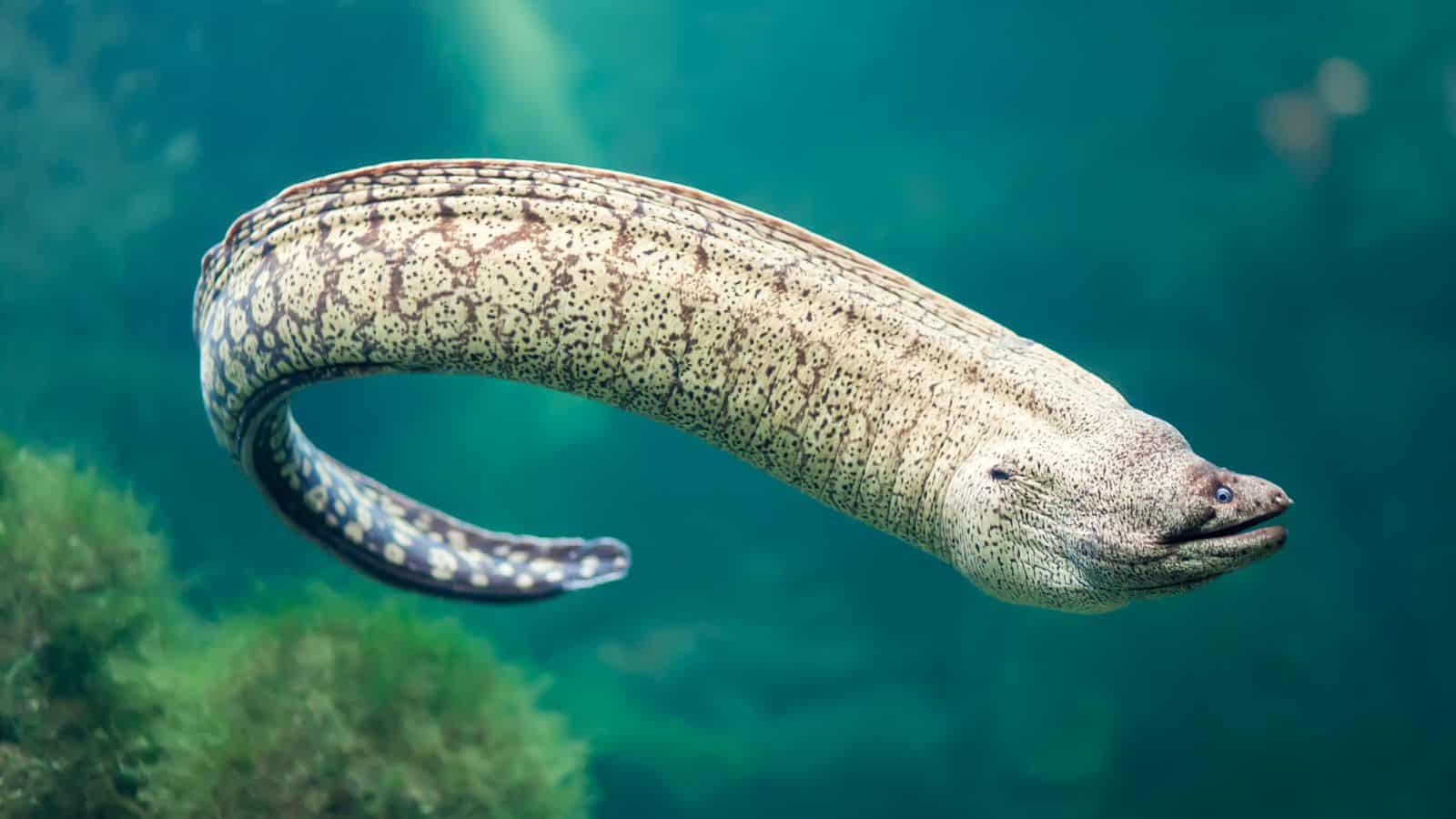Films like Jaws have given many Americans a crippling fear of sharks. However, this isn’t exactly fair on these mighty ocean dwellers, as shark attacks are actually very rare. What’s more, we think there are other sea creatures that can be even scarier. Here are 18 ocean animals more terrifying than sharks.
Box Jellyfish

Box jellyfish are famous for having deadly venom and almost completely transparent bodies, making them difficult to spot. According to the National Ocean Service, their venom can cause heart failure and death after just a few minutes, making them the most venomous marine animal on Earth.
Cone Snail

If you thought snails couldn’t be scary, it’s time to think again. The cone snail has a venomous harpoon that contains a toxin potent enough to kill humans. These beautiful but deadly critters are found in tropical seas throughout the world.
Portuguese Man O’ War

The Portuguese man o’ war is not actually a single organism. It is a colony of many organisms that work together. While its blue and purple colors may be beautiful, its long tentacles can deliver a very painful and sometimes deadly sting.
Stonefish

The stonefish is famous for being the most venomous fish in the world. Its venom is capable of causing paralysis and shock, and can even be fatal if left untreated. They can also be surprisingly difficult to see, as they excel in camouflaging themselves against rock and coral.
Blue-Ringed Octopus

The blue-ringed octopus may be small, but don’t let that fool you. Its vibrant blue rings are a warning signal for its deadly toxicity, as these little creatures have enough venom to kill 26 adult humans in just a few minutes. There is also currently no known antivenom for the bite, making them even scarier.
Moray Eel

Moray eels have sharp teeth, which can deliver a powerful and painful bite. They can also be very aggressive when threatened, and some species are known to be venomous. Moray eels typically reside in coral reefs and rocky crevices beneath the ocean surface.
Sperm Whale

You may be surprised to see a whale on this list, but the sperm whale is the largest of all toothed whales and is known for its deep-sea hunting capabilities, making them a particularly intimidating sight. They have also been known to attack ships on some rare occasions.
Giant Squid

As its name suggests, the giant squid is pretty… giant. In fact, according to Britannica, it can grow up to a staggering 13 meters (42 ft.) long. It also has one of the largest eyes in the whole animal kingdom. Thankfully, they live in deep ocean waters and are rarely encountered by humans.
Sea Snake

The sea snake uses an incredibly powerful venom for hunting and defending itself. While they are more likely to flee from humans than attack, they can become aggressive if they are threatened or provoked.
Humboldt Squid

Humboldt squids are sometimes called “red devils” because of their ability to quickly change color and their aggressive hunting tendencies. They can grow to be around 2 meters (6.5 ft.) long and can be found in the Eastern Pacific Ocean. Their powerful beak-like jaws are capable of doing some serious damage to prey and threats.
Blobfish

The blobfish has recently gained a reputation for being the “ugliest animal in the world.” However, despite their unsightly appearance, blobfish live deep below the ocean surface and are rarely encountered by humans, meaning they pose no threat to us.
Vampire Squid

As its name suggests, the vampire squid has a somewhat vampiric appearance, with red eyes and a dark, menacing coloration. However, they actually pose very little threat to humans, as they primarily feed on detritus and live deep under the sea.
Lanternfish

The lanternfish has bioluminescent organs, which it uses to attract prey and communicate. While it plays a crucial role in the oceanic food chain, its ominous, glowing appearance can make it rather intimidating to encounter.
Sarcastic Fringehead

The strangely named sarcastic fringehead is a small yet fierce fish famous for becoming extremely territorial and aggressive when it feels like its home is threatened. It has a large, colorful mouth and can be found in the Pacific Ocean.
Goblin Shark

Goblin sharks are sometimes called “living fossils” because they have been on Earth for so long. They have a unique snout, pink skin, and rapidly extending jaws, making them a pretty scary sight to those who see them. But thankfully, they live deep underwater, so it’s unlikely that you ever will.
Mantis Shrimp

The mantis shrimp may be small, but it is also incredibly fast and can deliver powerful strikes that can quickly dismember prey. However, they are quite a sight to behold, as they are brightly colored with red, green, blue, and orange hues.
Colossal Squid

The colossal squid is colossal by name and colossal by nature. It is the largest invertebrate in the world, and its tentacles can grow up to a staggering 14 meters (45+ ft.) in length. However, you are unlikely to ever see one in the wild, as they live in deep Antarctic waters.
Deep-Sea Anglerfish

The deep-sea anglerfish is a pretty terrifying sight. It is known for its huge jaws, long teeth, and bioluminescent lure, which it uses to attract prey deep beneath the ocean surface. Male anglerfish are much smaller than their female counterparts and live parasitically attached to females.

